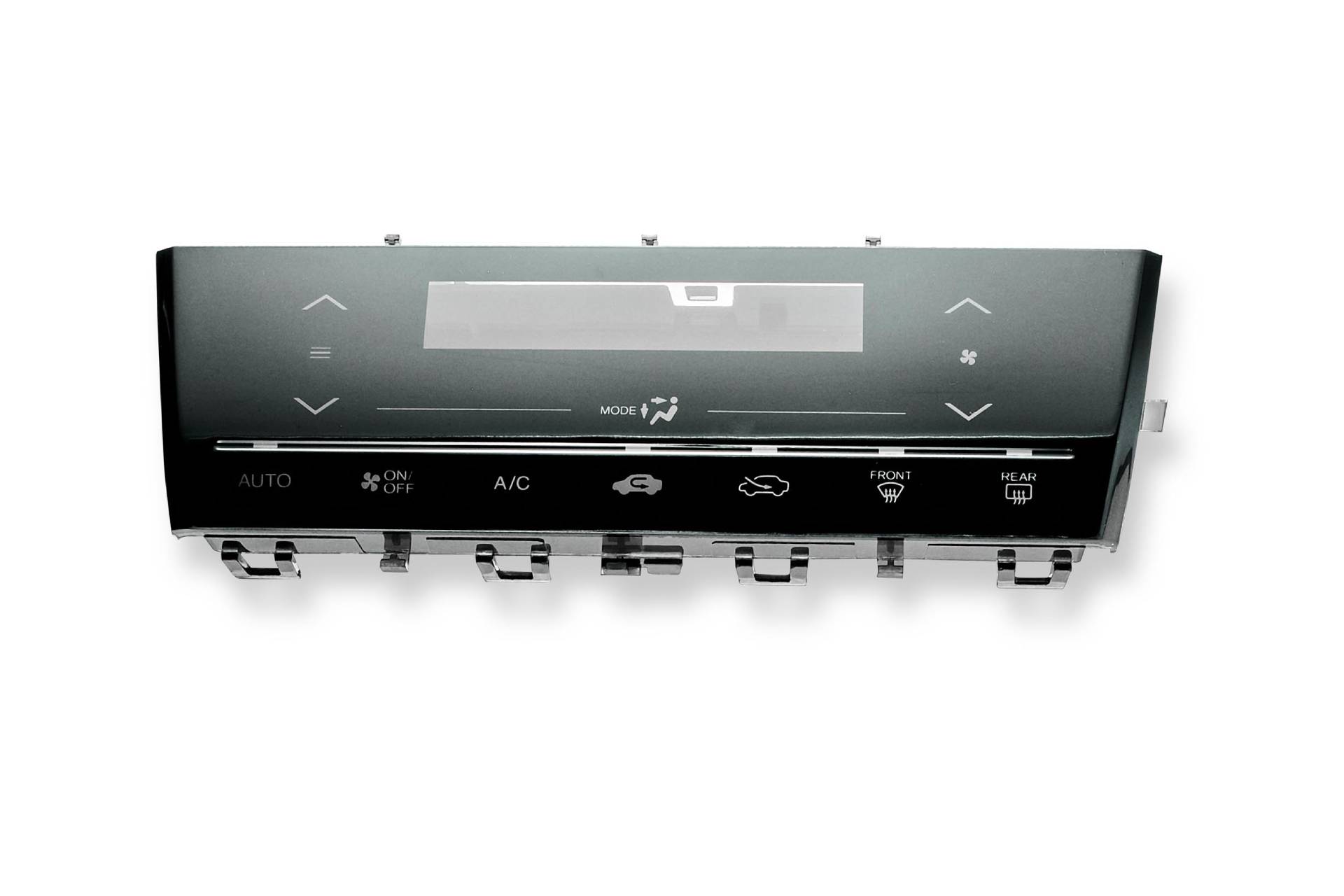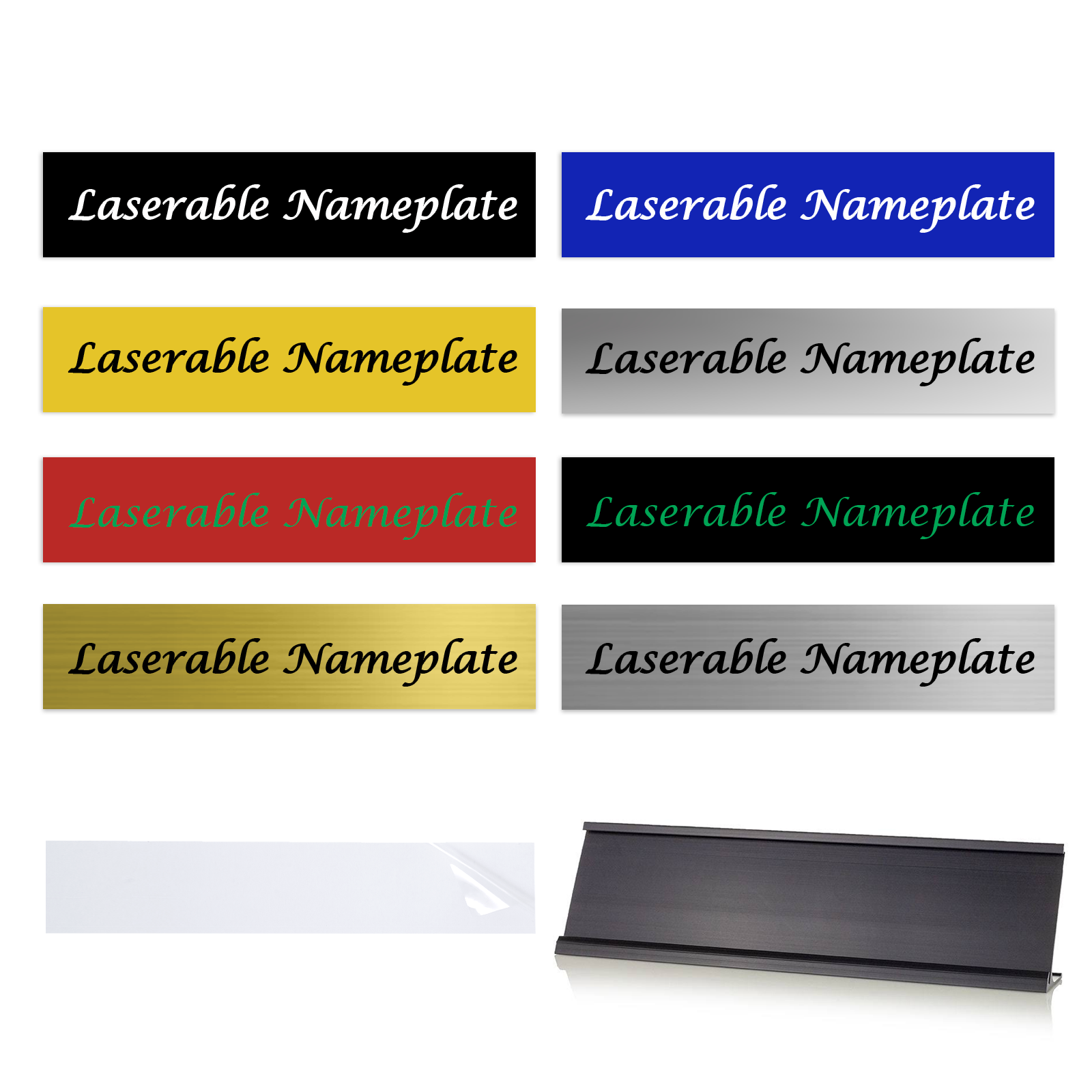Just How Plastic Nameplates Are Produced: A Comprehensive Overview to Their Production Process
The production of plastic nameplates involves a number of exact steps, beginning with the choice of appropriate materials to the final finishing touches. Each stage is vital, making sure the product fulfills particular requirements for longevity and aesthetics. Different production methods play a considerable role in crafting these nameplates. Recognizing these procedures can clarify the intricacies behind what might feel like a basic product. What variables add to the quality and modification of these nameplates?
Comprehending Plastic Products Made Use Of for Nameplates

The Layout Refine: From Idea to Model
The design procedure for plastic nameplates starts with a clear principle that guides the total creation. Developers team up with clients to define the objective, design, and specific needs of the nameplate. This first stage includes brainstorming sessions, mapping out ideas, and selecting colors and typefaces that straighten with branding goals.Once the concept is established, developers make use of computer-aided layout (CAD) software to produce comprehensive digital depictions. These prototypes enable visualization and adjustments before progressing. Feedback from stakeholders is integral throughout this phase, as it assists improve the design to satisfy expectations.After settling the electronic prototype, a physical version might be generated, usually with methods like 3D printing. This substantial depiction makes it possible for more analysis of visual appeals and capability. Generally, the layout process is a crucial action that lays the structure for the effective manufacturing of top quality plastic nameplates.
Cutting and Shaping the Plastic
In the cutting and forming stage of plastic nameplate manufacturing, the option of materials plays an important function in identifying the end product's quality and resilience (Plastic Nameplates). Different accuracy cutting methods, such as laser cutting and CNC machining, assurance that the plastic is formed with accuracy and uniformity. This combination of mindful material choice and advanced cutting techniques is crucial for producing high-grade nameplates

Product Choice Refine
Selecting the ideal material is essential for generating top notch plastic nameplates. Various kinds of plastics are available, each offering unique advantages and attributes. Common selections consist of acrylic, polycarbonate, and PVC. Polymer is favored for its clarity and UV resistance, making it ideal for outside applications. Polycarbonate, understood for its resilience and impact resistance, appropriates for environments that call for improved protection. PVC is frequently selected for its cost-effectiveness and flexibility in layout. The selection procedure also takes into consideration factors such as thickness, color, and surface area surface, which can greatly influence the last look and capability of the nameplate. Eventually, the chosen material has to align with the meant usage and visual objectives of the plastic nameplate.
Accuracy Trimming Techniques
While selecting the proper material prepares, precision reducing techniques play an important function fit the plastic nameplates right into their final types. Numerous techniques, consisting of laser cutting, CNC milling, and die cutting, are used to accomplish precision and consistency. Laser reducing utilizes focused light to generate complex designs and clean edges, perfect for complex patterns. CNC milling offers flexibility by getting rid of excess material with precision, suiting various densities and forms. Pass away cutting, on the other hand, permits mass production of consistent pieces, boosting performance. Each technique is chosen based on the layout specifications and the desired finish, guaranteeing that the last item satisfies top quality standards and client assumptions while maintaining toughness and aesthetic appeal.
Printing Techniques for Modification
How can suppliers achieve specific and lively layouts on plastic nameplates? The solution hinges on various printing techniques customized for modification. Digital printing has gotten appeal as a result of its capability to produce high-resolution photos and complex designs straight onto plastic surfaces. This method enables for fast turn-around times and marginal setup prices, making it optimal for short runs and personalized orders.Screen printing continues to be an additional widely made use of technique, specifically for larger amounts. It entails creating a stencil and using layers of ink, resulting in abundant shades and longevity. UV printing, which utilizes ultraviolet light to cure the ink, is also effective, providing outstanding bond and resistance to fading.Additionally, pad printing supplies adaptability for irregularly designed nameplates, enabling comprehensive styles on challenging surface areas. These printing approaches make it possible for makers to meet diverse client needs while guaranteeing high quality and durability in their plastic nameplate items.
Surface Treatments and Finishing Options

High Quality Control Steps in Production
Ensuring the highest criteria of quality assurance throughout the manufacturing of plastic nameplates is important for preserving item integrity and customer contentment. Makers carry out extensive examination protocols at numerous phases of the manufacturing process. Initially, raw materials undergo complete testing to verify they satisfy specs for toughness and shade consistency. Throughout the molding phase, automated systems monitor specifications such as temperature and pressure to stop defects.In enhancement, aesthetic evaluations are performed to identify any surface area imperfections or misalignments. When the nameplates are generated, they go through practical tests, including bond examinations for published components and stress and anxiety examinations for resilience. Quality control teams frequently employ statistical tasting techniques to examine sets, making certain that any variances from requirements are without delay attended to. This thorough method not just enhances item high quality however likewise fosters trust with customers, attesting the maker's dedication to quality in every nameplate created.
Packaging and Distribution of Finished Nameplates
The packaging and distribution of completed plastic nameplates are vital steps in guaranteeing they reach clients in suitable condition. Numerous product packaging materials are chosen to protect the nameplates throughout transportation, while delivering techniques are thoroughly selected based upon efficiency and cost-effectiveness. Furthermore, efficient storage space solutions are executed to maintain top quality up until the nameplates are provided.
Product Packaging Materials Utilized
Choosing ideal product packaging materials is necessary to guarantee their defense throughout transit when dispersing ended up plastic nameplates. Typically utilized materials consist of bubble wrap, foam extra padding, and cardboard boxes, all made to support the nameplates against shocks and impacts. Bubble wrap gives a flexible obstacle, while foam extra padding guarantees that nameplates stay securely in location, lessening the threat of scrapes or damage. In addition, tough cardboard boxes are utilized to contain the nameplates, supplying structural support and defense from exterior elements. Tags might be related to suggest taking care of guidelines or breakable contents, additionally improving security throughout transportation. Overall, utilizing premium product packaging products significantly adds to the integrity and discussion of the ended up plastic nameplates upon arrival at their destination.
Delivering Methods Used
Effective circulation of ended up plastic nameplates counts on various delivery approaches that ensure safe and timely delivery. Companies commonly utilize copyright solutions, freight delivery, and post offices, depending on the size, weight, and location of the bundles. For neighborhood shipments, messenger services provide quick transportation, making sure nameplates get to customers swiftly. For larger orders, products delivery is favored, utilizing vehicles or shipping containers to transfer mass quantities efficiently. Postal services serve as a cost-effective option for smaller sized deliveries, particularly for residential deliveries. All shipping techniques focus on protective packaging to stop damage throughout transportation. Tracking systems are also used to keep track of deliveries, supplying customers with real-time updates and reassurance pertaining to the condition of their orders.
Storage Solutions Implemented

Often Asked Questions
What Types of Organizations Frequently Make Use Of Plastic Nameplates?
Plastic nameplates are commonly used by different services, including offices, factories, healthcare facilities, and colleges. These nameplates serve necessary features such as identification, information display screen, and branding, adding to business effectiveness and professional appearance across varied settings.
For how long Does the Entire Manufacturing Refine Take?
The manufacturing procedure duration varies based on complexity and quantity, commonly ranging from a couple of days to several weeks. Elements influencing this timeline consist of layout approval, material schedule, and manufacturing techniques utilized by the company.
Can Plastic Nameplates Be Recycled After Use?
Plastic nameplates can be recycled, given they are made from recyclable materials. However, the availability of reusing programs and neighborhood policies might impact their recyclability. Appropriate disposal practices are important to guarantee reliable recycling.
What Are the Ecological Impacts of Plastic Nameplate Manufacturing?
The environmental influences of plastic nameplate manufacturing include carbon exhausts, source depletion, and contamination from making processes. Plastic Nameplates. In addition, inappropriate disposal adds to plastic waste, adversely impacting communities and wildlife, highlighting the requirement for lasting methods
Are There Any Kind Of Security Issues With Plastic Nameplates?
Security problems regarding plastic nameplates largely involve possible chemical exposure throughout manufacturing and the danger of products deteriorating over time, which may lead to hazardous compounds being launched, affecting both human health and wellness and the setting. While various materials can be made use of for nameplates, plastic continues to be a preferred choice due to its convenience and durability. In the cutting and shaping stage of plastic nameplate production, the choice of materials plays a vital function in determining the final item's top quality and durability. Picking the appropriate material is vital for generating premium plastic nameplates. While choosing the appropriate product lays the foundation, accuracy cutting methods play a vital function in shaping the plastic nameplates right into their last forms. When distributing completed plastic nameplates, choosing proper product packaging materials is vital to assure their protection throughout transportation.